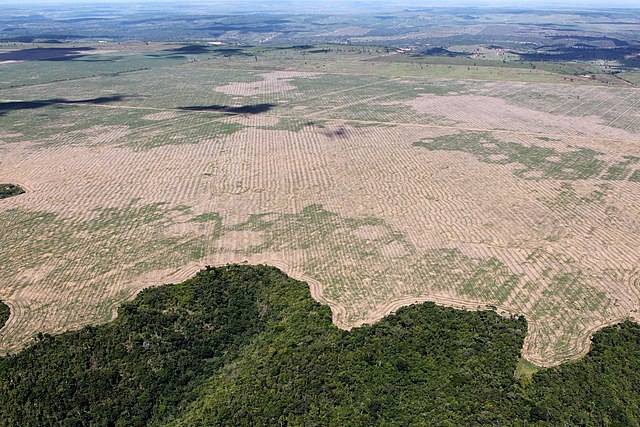Deforestation in Malaysia
Deforestation in Malaysia is a major environmental issue in the country. Between 1990 and 2010, Malaysia lost an estimated 8.6% of its forest cover, or around 1,920,000 hectares. Logging and land clearing, particularly for the palm oil sector, have been significant contributors to Malaysia's economy. However, as a megadiverse country, efforts have been made to conserve Malaysia's forests and reduce the rate of deforestation.
This image reveals the overall extent of land-cover change throughout the region.
Oil palm plantations in Sarawak, Malaysia
Deforestation or forest clearance is the removal and destruction of a forest or stand of trees from land that is then converted to non-forest use. Deforestation can involve conversion of forest land to farms, ranches, or urban use. About 31% of Earth's land surface is covered by forests at present. This is one-third less than the forest cover before the expansion of agriculture, with half of that loss occurring in the last century. Between 15 million to 18 million hectares of forest, an area the size of Bangladesh, are destroyed every year. On average 2,400 trees are cut down each minute. Estimates vary widely as to the extent of deforestation in the tropics. In 2019, nearly a third of the overall tree cover loss, or 3.8 million hectares, occurred within humid tropical primary forests. These are areas of mature rainforest that are especially important for biodiversity and carbon storage.
Deforestation of the Amazon rainforest in Brazil's Maranhão state, 2016
Deforestation in Riau province, Sumatra, Indonesia to make way for an oil palm plantation in 2007.
Deforestation in the city of Rio de Janeiro in Brazil's Rio de Janeiro state, 2009
Deforestation in Ecuador.






